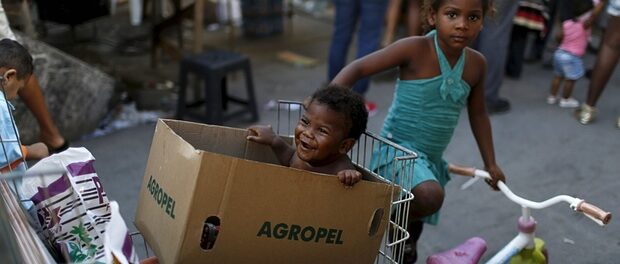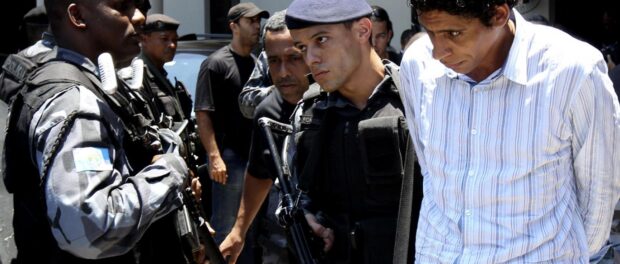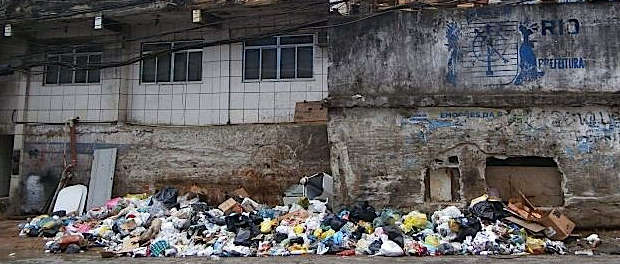
This is the latest contribution to our media watchdog series on the Best and Worst International Reporting on Rio’s favelas, part of RioOnWatch’s ongoing conversation on the media narrative and media portrayal surrounding favelas.
2015 draws to a close with less than eight months remaining to the Opening Ceremony of the 2016 Olympics. With the increasing global media attention ahead of the Games has come rare and insightful in-depth reporting on key issues like race, state violence, the real motivations behind evictions, and active challenges to stigma, as well as exciting platforms for favela residents to speak directly to international readers. This amplified reach builds on a trend we documented in the first phase of our longitudinal research on international mainstream coverage of Rio’s favelas from 2009 to 2014: in six major English-language outlets favela residents were cited over six times more in 2013-2014, the year ahead of the 2014 World Cup, than in 2009-2010, just after the Olympics were awarded to Rio.
Still present in 2015, however, were dangerous stereotypes, lazy language, and the misrepresentation of favelas as ‘slums’ and ‘shantytowns.’ Our research found that, although the use of the word ‘slum’ is declining in favor of more accurate and nuanced descriptions, it remained the most frequent translation applied to favelas in 2014. The media’s use of stigma-heavy terms and other stereotypes bolsters government policies that harm favela residents by painting an image that any policy is good policy, and that there are no assets in these communities to protect.
Here, we analyze some of the most unproductive articles we saw in 2015 and celebrate some of the best.
The Worst
An ABC Australia article from November tackles the productive question of whether visiting a favela as a foreigner is an “insightful tour or poverty porn,” but the article opens with an unproductive scene: “In the middle of one of Rio’s poorest suburbs a tall black man approaches me and takes my hand. He isn’t about to rob me. Or sell me drugs…. He just wants to show me how to dance.” Regardless of the author’s intention here, playing with tired but still pervasive stereotypes perpetuates them further, especially when the text lacks any criticism of stereotypes. Unfortunately in Rio, stereotypes linking black men to drugs and crime are too often relied upon to justify police killing innocent people. Furthermore, the author’s language to describe favelas lacks nuance. She refers to them as “hotbeds of drug traffickers and extreme poverty,” a misleading statement about communities where less than 1% of residents are involved in trafficking. Increasingly connected to technology, about 65% of favela residents are part of Brazil’s growing middle-class.
In January 2015 an article from the Daily Mail suggested unfounded rumors that David Beckham purchased a home in Vidigal in 2014 were responsible for gentrification in the neighborhood. This false narrative obscures the growing trend of increased interest in Vidigal property since the Pacifying Police Unit (UPP) was installed in January 2012, as well as the considerable community organizing in early 2014 to debate its impacts. Although the article features a number of resident quotes detailing the difficult effects of rising rents, it undermines the credibility of residents by contrasting the “truth” (that Beckham did not buy property there) and “the version told by almost everyone in Vidigal.” This undermining is particularly problematic alongside quotes from a French resident of Vidigal who says: “People are very ignorant here… People are very lazy and no-one is professional. It’s like living in Africa. I tell people, you know why you are third world, because you don’t know how to work.” The article offers no criticism of or counter-quotes to these heavily stigmatizing, racist comments.

A book review from the Evening Standard took Misha Glenny’s complex book about former Rocinha druglord, “Nem,” and managed to decimate the nuance of the story through lazy language. The author describes favelas as “drug-blighted shack dumps.” The fact that he also refers to favela residents as “countryfolk” suggests a limited understanding of Rio’s socioeconomic and physical geography. Nem and other druglords are labeled “shantytown Napoleons,” which seems a poor, unexplained reference to Napoleon as well as an inaccurate portrayal of the mostly brick and cement homes in Rocinha and other favelas. The article suggests favelas are stagnant—“little has changed” since Nem’s childhood—and that someone like Nem, who “at least resolved to… make something of his life,” stands out from the rest of the apparently passive masses. The underlying insinuations are that the average favela residents’ lives amount to little, and that their circumstances are due to a lack of “resolve.”
The Best
Nadia Sussman’s video report on police violence in Complexo do Alemão for the New York Times is a harrowing portrait of a community caught in the crossfire. Using interviews with relatives of the victims of police violence this year, including the mother of 10-year-old Eduardo de Jesus who was killed in May, mixed with community-shot footage of violence and gunfire, the video highlights the failures of police intervention in Alemão and the desperate hopes and dreams of peace within in the community. Shot and edited with sensitivity, the video expresses the emotional and psychological trauma faced by residents caught in conflict situations and captions outlining judicial events and statistics of violence emphasize the lack of justice and peace.

Flora Charner’s Beacon project “I Am Favela: A View from the Inside Out“ is a fully reader funded series which showcases “incredible stories of people who are fighting discrimination and changing the negative stereotypes often associated with favela culture.” The series gives voice to favela residents across the city doing inspirational work to destigmatize and improve life in their communities, including Voz das Comunidades reporter Daiene Mendes from Complexo do Alemão, martial arts trainer Will Ribeiro from Andaraí and tour guide and activist Thiago Firmino from Santa Marta. The profiles provide valuable, nuanced insight into the daily life, qualities and challenges of Rio’s favelas through the personal stories and voices of individual community members.
James Young’s recent report on evictions for VICE is a thorough journalistic look at the broad issue of forced evictions and the Olympics in Rio, giving voice to residents and specialists and visibility to the counter-narrative that the Olympics are being used to advance real estate interests in the city. The author highlights the fallacy of the given reasons for eviction in the cases of Vila Recreio II and Vila Autódromo, the policy failure of Morar Carioca–the stated social legacy of the Olympics, and the physical, emotional and social damage caused by destroying whole communities. In approaching the topic of evictions through historical precedence and context backed by community perspectives, the article provides an impressive summary of the issues involved in Olympic city evictions in Rio.
Out last week, another essential article on evictions is Sean Gregory’s evocative report on Vila Autódromo for TIME. Although it’s important to note that relatively few of Vila Autódromo’s current or evicted residents are “impoverished” as the article’s title suggests, this piece interviews and draws critical attention to the remaining families’ personal connections to their community, their relentless determination to remain, and their arguments for resistance, despite the battered state of their neighborhood. This is especially critical in the face of a new strategy by the City to claim to reporters that no one is left. The prominence of resident quotes and translations of resistance graffiti gives respect and validity to the residents’ struggle and leaves readers at the end with a sense of the same inspiration visitors to the community experience: moved by the community’s overwhelming lesson, that “Not everyone has a price.” Finally, as TIME sports reporter, Gregory adds important context, emphasizing that removal from Vila Autódromo is both “not exactly in keeping with the Olympic spirit of fair play” and contrary to the City’s “vow to incorporate the favela into the Olympic planning.” Gregory does, however, notably point out that the City still has a chance to “finally fulfill its vow to incorporate the favela into the Olympic planning, and improve infrastructure and services within the community in ways that will last well after the Olympic flame has gone on.”
Stephanie Nolen’s compelling feature on racial inequality in Brazil for The Globe and Mail exposes the extreme obstacles many favela residents, the majority of whom are Afro-Brazilian, face in combatting a rigid, yet little acknowledged, race-based hierarchy. The author lays out an inherent contradiction: Brazil’s national identity is founded on a celebration of racial diversity while racial inequality is blatantly pervasive in day-to-day life. The article then dives deep into the lives of Brazilian families to demonstrate through complex stories how that contradiction is sustained. The rich historical context provided shows why Brazil has unique concepts of race, but the comparisons drawn to other countries, like the US, strengthen the article’s significance.
The Guardian’s “Rio Olympics: View from the Favelas” series gives respected community journalists a global platform for their reflections. In the latest round of articles, each journalist wrote a series of diary-style entries on events in their community. Michel Silva, the founder of Rocinha news outlet Viva Rocinha, reflects on how the death of a teenager barely made the news, challenges the social role of the Pacifying Police Unit (UPP), and questions the real motivations behind hosting a golf demonstration in Rocinha. Thaís Cavalcante, a journalist from Maré, emphasizes the regular police presence in daily life in Maré, but also documents the cultural and community activities that go on despite it. The series also published a diary of the the daily violence in Complexo do Alemão by Daiene Mendes. These community journalists bring depth and relevance that is rarely equaled by outsiders, and they disrupt stereotypes through their eloquent and passionate writing about their communities.
Other fantastic articles this year include coverage from both The New York Times and Fusion of the growing importance of community journalists and residents using video to document police violence in Rio. We also highly recommend Jonathan Watts’ feature on billionaire developer Carlos Carvalho’s plans for Barra, Catherine Osborn’s analysis of pacification in Alemão in 2015, Simon Romero and Taylor Barnes’ piece on the “grim acceptance” of police killings, and Will Carless’s consistent coverage of key race and violence issues. A BBC video brought new perspectives into the discussion by allowing two children from Maré to take the reigns in telling their story. RioOnWatch‘s Editor Theresa Williamson published a piece on the complicated role of land tenure in favelas facing real estate speculation in Architectural Review. Finally, the AP’s ongoing investigations into virus and bacteria levels in Rio’s waters have sustained a critical conversation about the City’s failure to deliver one of its key Olympic legacy promises and expand basic sewerage systems in Rio.
In short, we’re thrilled to see a huge leap of improvement over this same report just two years ago, when there were no articles we felt were good enough to feature, and look forward to even more amazing reporting on favelas in 2016.


